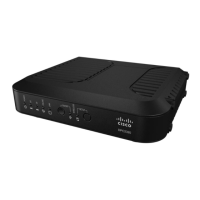Use this link to configure TCP/UDP port triggers. Port
triggering is similar to port forwarding, but is a dynamic
function. In other words, the ports are not held open, and the
ports close if no outgoing data is detected on the selected ports
for a period of 10 minutes.
Use this link to configure an IP address that is visible to the wide
area network (WAN). DMZ hosting is commonly referred to as
―exposed host,‖ and allows you to specify the ―default‖ recipient
of WAN traffic that Network Address Translation (NAT) is
unable to translate to a known local PC.
A DMZ is used by a company that wants to host its own Internet
services without sacrificing unauthorized access to its private
network. DMZ allows one IP address to be unprotected while
others remain protected. The DMZ is located between the
Internet and an internal network's line of defense that is a
combination of firewalls and bastion hosts.
Typically, the DMZ contains devices accessible to Internet traffic,
such as web (HTTP) servers, FTP servers, SMTP (e-mail) servers,
and domain name system (DNS) servers.
Use this link to create, configure, and control Virtual Private
Network (VPN) protocols and manage Internet Protocol Security
(IPsec) VPN tunnels.
Firewall
The following table provides a description of the pages available from within the
Firewall section of the Setup page.
Use this link to access the firewall event log and to enter your e-mail
address in order to receive e-mail alerts related to firewall attacks by
hackers.

